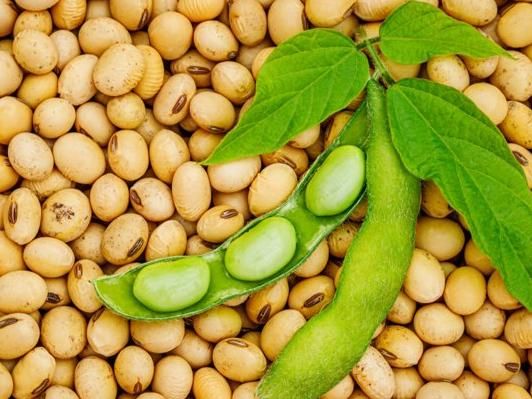The world can be fed with only plant-based food
Sufficient plant proteins are produced in the world to feed todays world's population, says Dr. Stacy Pyett, Program Manager Proteins for Life at WUR. She investigates the protein transition, which includes a shift to a more plant-based diet in high-income countries.

The world can be fed with only plant-based food
Wageningen University
If all consumers on earth switch to a plant-based diet, more plant proteins will become available for human consumption, says Pyett, because currently roughly half of the plant proteins are used as animal feed. In addition, you need less farmland for this plant-based diet than with our current diet.
The amount of available vegetable proteins is more than sufficient
WUR calculations, using data from the World Food Organization FAO show that 630 million tons of protein were produced in the world in 2018: 109 million tons of animal proteins and 520 million tons of plant proteins. Pyett estimates that about half of the plant proteins were processed in animal feed. These will become available for human consumption when we switch to a purely plant-based diet. She also expects that a third of this production, as it is now, will be lost during harvest, processing, transport, storage, or in the store, or wasted by consumers. As a result, 346 million tons of plant proteins per year are available in the world.
She compares that number to the annual protein requirement of the world population. According to the World Health Organization, an average adult human needs between 50 and 60 grams of protein per day. This means the nearly 8 billion people on Earth need to eat 172 million tons of protein every year to stay healthy. If all world citizens reach the Dutch consumption of 79 grams of protein per person per day, we will need 227 million tons of protein on a global scale.
The worldwide availability of vegetable proteins (346 million tons) is therefore more than sufficient to meet the worldwide need for proteins (227 million tons).
Circularity diet has several benefits
In addition, Pyett looked at whether sufficient agricultural land is available worldwide for a purely plant-based diet. In doing so, she draws on research by Wageningen scientist, Dr. Hannah van Zanten, who calculated the necessary land use in the world for the current diet, the vegan diet and the 'circularity diet'. This shows that the current diet requires an average of 0.17 hectares of agricultural land per person per day, while the vegan diet only requires 0.12 hectares. So with a completely plant-based diet you need almost 30 percent less agricultural land in the world, concludes Pyett.
She also notes, following Van Zanten, that the 'circularity diet' requires even less agricultural land in the world. In this circular agriculture, farm animals are fed on natural grasslands and residual streams, converting otherwise inedible biomass into animal proteins. In this way, a diet with little meat and a lot of vegetable protein is possible, and only requires between 0.08 and 0.11 hectares of agricultural land per person per day. This creates even more space to not only feed the world's population, but also to restore nature, increase biodiversity, and plant carbon-capturing forests.
Other news from the department science

Get the food & beverage industry in your inbox
From now on, don't miss a thing: Our newsletter for the food & beverage sector brings you up to date every Tuesday and Thursday. The latest industry news, product highlights and innovations - compact and easy to understand in your inbox. Researched by us so you don't have to.























































